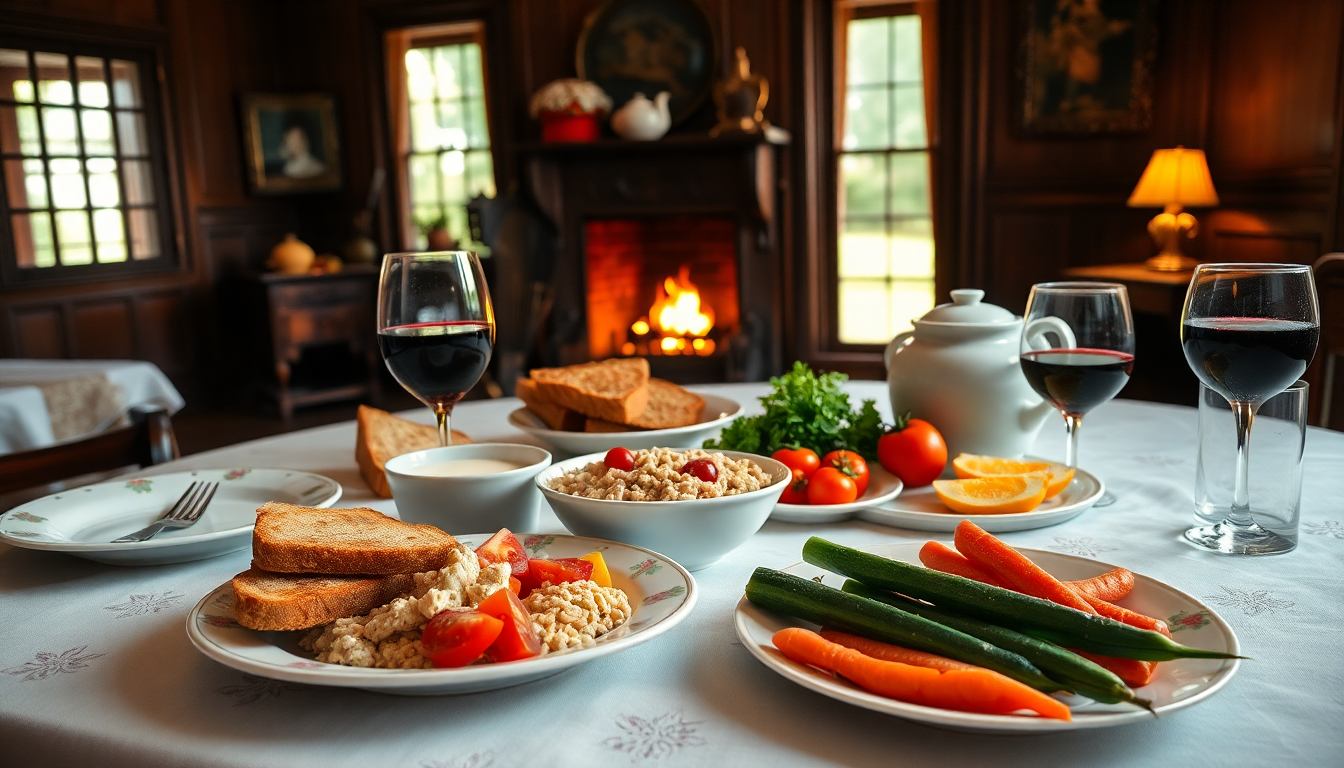Table of Contents
As we gear up to celebrate Independence Day, have you ever thought about what America’s Founding Fathers might have enjoyed at the dinner table? These iconic figures not only laid the groundwork for our nation but also had distinct culinary preferences that can inspire our meals today. From George Washington’s hearty breakfasts to Thomas Jefferson’s love for fresh veggies, diving into these flavors offers a tasty glimpse into America’s past.
George Washington’s Culinary Favorites
George Washington, our very first President, had a palate that leaned toward simple yet satisfying meals. Culinary experts tell us that his diet was rich in local ingredients, a reflection of the agricultural practices of his era. Washington was particularly fond of hoecakes—soft, cornmeal griddle cakes—along with cherries and a variety of nuts like hazelnuts and walnuts. These weren’t just casual snacks; they were essential to his daily meals, often dolloped with butter and honey to accommodate his dental issues.
In addition to hoecakes, Washington enjoyed fish from his own fisheries, paired with fruits and vegetables grown on his plantation. He had a taste for Madeira wine, which allowed him to enjoy a touch of luxury while staying connected to local produce. His focus on simplicity and locality in meals demonstrates a culinary philosophy that champions freshness and sustainability. Doesn’t that make you think about how we can apply similar principles today?
Thomas Jefferson’s Impact on American Cuisine
Then there’s Thomas Jefferson, the third President, who wasn’t just a statesman but also a passionate gardener and culinary enthusiast. His extensive garden at Monticello featured over 250 types of produce, showcasing his love for diverse culinary experiences. Jefferson’s meals often emphasized fresh vegetables, and he’s credited with popularizing macaroni and cheese, French fries, and even ice cream in America. Can you imagine a summer barbecue without these staples?
Jefferson’s innovative approach meant that he used meat sparingly, treating it more like a flavor enhancer for vegetables. This reveals a sophisticated palate that craved balance. His culinary influences were far-reaching, introducing new ingredients and French techniques that significantly shaped American food culture. Isn’t it fascinating how one person’s passion can alter a nation’s dining habits?
Benjamin Franklin and John Adams: Regional Flavors
When we look at Benjamin Franklin, his culinary preferences were deeply rooted in his New England upbringing. He enjoyed a variety of foods, from oysters and turkey to cranberries and Indian corn. Franklin’s love for local produce made him a pioneer of locavore dining, emphasizing seasonal ingredients. His fondness for turtle soup and apple tarts showcased his eclectic tastes, blending both local and international influences.
In contrast, John Adams had a menu that reflected New England’s agricultural traditions. His daily routine often included hard cider and dishes like apple pandowdy, a rustic dessert that highlighted the region’s apple bounty. Another favorite was the New England boiled dinner, featuring corned beef and root vegetables. Adams’ meals were a testament to the cold climate and agricultural resources of his area, creating a culinary identity shaped by geography. How do you think our regional foods influence our own culinary identities today?
Recreating Historic Dishes for Modern Celebrations
Bringing the flavors of the Founding Fathers into your modern meals can forge a unique connection to American history. Recipes like hoecakes and apple pandowdy can easily be updated while keeping their historical roots intact. For example, you can enjoy hoecakes made from cornmeal, served with butter and honey—perfect for breakfast or brunch!
Jefferson’s creamy macaroni and cheese could be a hit at your Fourth of July celebrations, reminding everyone of the culinary legacy that shapes American dining. And don’t forget Franklin’s apple tarts and Adams’ apple pandowdy; these delightful desserts will resonate with your guests, offering a taste of history in every bite.
By incorporating these historic dishes into your Independence Day festivities, you’re not just honoring America’s founding era—you’re also enriching your culinary skills. Embracing the flavors cherished by these influential figures creates an authentic dining experience that beautifully blends the past with the present. So, what will you cook up this Independence Day?


